Here’s What Happens To Your Body In A Crematorium
1. Identifying the Deceased
 Image source EverplansIdentifying the body usually involved a close family member, sometimes supported by a friend as it's traumatic, confirming the deceased is their loved one. Once this has been clarified, a metal identity tag is placed on the foot of the body and will remain in place throughout. It will be put with the remains for final verification.
Image source EverplansIdentifying the body usually involved a close family member, sometimes supported by a friend as it's traumatic, confirming the deceased is their loved one. Once this has been clarified, a metal identity tag is placed on the foot of the body and will remain in place throughout. It will be put with the remains for final verification.Advertisement
2. Official Permission
 Image source TapmartThe crematory must have official permission to move forward with the cremation. This entails the person who is making the final arrangements completes the paperwork which will authorise the crematory to proceed. This documentation will ask for information regarding the type of container the crematory should use and who will pick up the remains.
Image source TapmartThe crematory must have official permission to move forward with the cremation. This entails the person who is making the final arrangements completes the paperwork which will authorise the crematory to proceed. This documentation will ask for information regarding the type of container the crematory should use and who will pick up the remains.Advertisement
3. Preparing the Body
 Image source EverplansPreparing the body is something the crematorium can handle on its own and involves cleaning and dressing of the body. Jewellery and other items are taken off for the loved ones to keep unless there is a special request for the deceased to wear a particular piece. Any prosthetics or mechanical devices are removed to avoid a reaction.
Image source EverplansPreparing the body is something the crematorium can handle on its own and involves cleaning and dressing of the body. Jewellery and other items are taken off for the loved ones to keep unless there is a special request for the deceased to wear a particular piece. Any prosthetics or mechanical devices are removed to avoid a reaction.Advertisement
4. Moving To The Cremation Chamber
 Image source aCremationThe cremation takes place in a specially designed furnace and is referred to as a cremation chamber or retort. It is exposed to extreme temperatures up to 1,800 degrees Fahrenheit, leaving behind only the ashes. Following the procedure there is a cooling period which will be required before the remains can be handled.
Image source aCremationThe cremation takes place in a specially designed furnace and is referred to as a cremation chamber or retort. It is exposed to extreme temperatures up to 1,800 degrees Fahrenheit, leaving behind only the ashes. Following the procedure there is a cooling period which will be required before the remains can be handled.Advertisement
5. Checking The Remains
 Image source Scientific AmericanAfter the cremation, the remains are inspected for any metal remnants that may be left behind. This can be the result of items such as screws, pins and joints the deceased had surgically placed during their life. Metal is removed by hand or with strong magnets and t is often sent for recycling. The cremated remains are then ground down by a special processor into the final resulting ashes.
Image source Scientific AmericanAfter the cremation, the remains are inspected for any metal remnants that may be left behind. This can be the result of items such as screws, pins and joints the deceased had surgically placed during their life. Metal is removed by hand or with strong magnets and t is often sent for recycling. The cremated remains are then ground down by a special processor into the final resulting ashes.Advertisement
6. Transferring the Ashes
 Image source The GuardianUnless otherwise specified, the remains are placed in a sealed plastic bag which is then housed inside an urn or another container. The family will then be contacted to pick it up and take it home. The handing over process is dealt with extremely sympathetically as it is such an emotional procedure.
Image source The GuardianUnless otherwise specified, the remains are placed in a sealed plastic bag which is then housed inside an urn or another container. The family will then be contacted to pick it up and take it home. The handing over process is dealt with extremely sympathetically as it is such an emotional procedure.Advertisement
7. How Long Is The Process
 Image source Funeral InspirationsCremation is considered more efficient than traditional burials and can be completed in a shorter length of time following a death. Depending on factors such as the size and weight of the body, the type of container holding the body and the efficiency of the equipment installed, the actual cremation procedure takes around 2-3 hours.
Image source Funeral InspirationsCremation is considered more efficient than traditional burials and can be completed in a shorter length of time following a death. Depending on factors such as the size and weight of the body, the type of container holding the body and the efficiency of the equipment installed, the actual cremation procedure takes around 2-3 hours.Advertisement
8. What Is a Cremation Chamber?
 Image source WikipediaThe cremation chamber is basically an industrial furnace designed to hold a single body. It is lined with fire-resistant bricks which hold in the intense heat. Modern cremation furnaces are computerized and automated, fuelled with natural gas, diesel or propane.
Image source WikipediaThe cremation chamber is basically an industrial furnace designed to hold a single body. It is lined with fire-resistant bricks which hold in the intense heat. Modern cremation furnaces are computerized and automated, fuelled with natural gas, diesel or propane.Advertisement
9. How Many Types of Cremation Are There?
 Image source Dignity MemorialCompared with traditional burial, cremation does not require the body to be embalmed which can be quite an expensive process. There is also no need for a large burial plot. There are 3 types of cremation, direct cremation, liquid cremation and green cremation.
Image source Dignity MemorialCompared with traditional burial, cremation does not require the body to be embalmed which can be quite an expensive process. There is also no need for a large burial plot. There are 3 types of cremation, direct cremation, liquid cremation and green cremation.Advertisement
10. Direct Cremation
 Image source Urns For AshesDirect cremation is a process where the remains are transferred directly to a cremation centre with no funeral service taking place beforehand. This is the cheapest form of burial as there is no funeral service, no wake and no casket purchase. Most families will arrange a memorial service for family and friends to pay their respects.
Image source Urns For AshesDirect cremation is a process where the remains are transferred directly to a cremation centre with no funeral service taking place beforehand. This is the cheapest form of burial as there is no funeral service, no wake and no casket purchase. Most families will arrange a memorial service for family and friends to pay their respects.Advertisement
11. Liquid Cremation
 Image source NHPRThe process of alkaline hydrolysis is an alternative to flame cremation. The combination of the water, heat, alkali and pressure causes a reaction that speeds up decomposition and leaves behind only bone fragments and a sterile liquid. This flameless process results in about a third more remains than flame-based cremations.
Image source NHPRThe process of alkaline hydrolysis is an alternative to flame cremation. The combination of the water, heat, alkali and pressure causes a reaction that speeds up decomposition and leaves behind only bone fragments and a sterile liquid. This flameless process results in about a third more remains than flame-based cremations.Advertisement
12. Green Cremation
 Image source Basic FuneralsAlkaline hydrolysis is considered a “green” alternative to burial. Once drained of all the remaining bone fragments, the resulting sterile solution can be recycled through the wastewater treatment system. Many environmentally conscious individuals are now opting for alkaline hydrolysis instead of the conventional procedure because of its environmental benefits. Because there is no flame, green cremation eliminates any concerns regarding mercury emissions and reduces the use of fossil fuels and greenhouse gasses.
Image source Basic FuneralsAlkaline hydrolysis is considered a “green” alternative to burial. Once drained of all the remaining bone fragments, the resulting sterile solution can be recycled through the wastewater treatment system. Many environmentally conscious individuals are now opting for alkaline hydrolysis instead of the conventional procedure because of its environmental benefits. Because there is no flame, green cremation eliminates any concerns regarding mercury emissions and reduces the use of fossil fuels and greenhouse gasses.Advertisement
13. What Happens To The Body During Cremation?
 Image source Orthodox TimesThe different types of cremation use different technologies to affect the body. In the' 'traditional' flame-based method, the body is placed into a cremation chamber that reduces the body to bone fragments using flame and heat. The funeral directors will talk through every step with the relatives.
Image source Orthodox TimesThe different types of cremation use different technologies to affect the body. In the' 'traditional' flame-based method, the body is placed into a cremation chamber that reduces the body to bone fragments using flame and heat. The funeral directors will talk through every step with the relatives.Advertisement
14. How Does Combustion Take Place?
 Image source GrungeCombustion burns off tissue, body fat, organs and some container materials such as Secondary combustion continues to work on the remaining inorganic particles usually from the container. The gases (carbon dioxide and water vapour) discharge, leaving bone fragments to be pulverized into ashes.
Image source GrungeCombustion burns off tissue, body fat, organs and some container materials such as Secondary combustion continues to work on the remaining inorganic particles usually from the container. The gases (carbon dioxide and water vapour) discharge, leaving bone fragments to be pulverized into ashes.Advertisement
15. What type of container is used for cremation?
 Image source WikipediaWhile there are special caskets designed for cremation, the container can also be a simple cardboard box. The only requirements are that the container must be combustible, non-toxic and sturdy enough to hold the weight of the body. The family will be talked through the options.
Image source WikipediaWhile there are special caskets designed for cremation, the container can also be a simple cardboard box. The only requirements are that the container must be combustible, non-toxic and sturdy enough to hold the weight of the body. The family will be talked through the options.Advertisement
16. What type of container is used for the remains?
 Image source Cremation InstituteThe crematorium will typically place the remains in a sealed, airtight bag or container. This can then be placed inside any receptacle or container. The family must be sure to follow burial regulations for their city/country, if the remains are to be buried in the receptacle.
Image source Cremation InstituteThe crematorium will typically place the remains in a sealed, airtight bag or container. This can then be placed inside any receptacle or container. The family must be sure to follow burial regulations for their city/country, if the remains are to be buried in the receptacle.Advertisement
17. What happens to the remains after cremation?
 Image source Stuart Wiltshire Glass OutletCremated remains can be moved easily and be put, for example, by a memorial bench, sculpture or tree plot. The ashes are often scattered in an area which had meaning for the deceased. They can even be made into a gem, similar to a diamond and be worn by the deceased's nearest and dearest. This can give great comfort to the mourner.
Image source Stuart Wiltshire Glass OutletCremated remains can be moved easily and be put, for example, by a memorial bench, sculpture or tree plot. The ashes are often scattered in an area which had meaning for the deceased. They can even be made into a gem, similar to a diamond and be worn by the deceased's nearest and dearest. This can give great comfort to the mourner.Advertisement
18. What are human ashes made of
 Cremation SolutionsCremated remains consist mostly of bone fragments along with residue that will have been left from the container and anything else from the incineration. Family members are often very hesitant at seeing the ashes but will actually gain great comfort from knowing they can keep the ashes close to them.
Cremation SolutionsCremated remains consist mostly of bone fragments along with residue that will have been left from the container and anything else from the incineration. Family members are often very hesitant at seeing the ashes but will actually gain great comfort from knowing they can keep the ashes close to them.Advertisement
19. How much ash is there after cremation?
 Image source Cremation SolutionsClose relatives of the deceased, particularly an older next of kin, may worry about how much the ashes weigh and will they be able to take the weight of the urn. Depending on the body and the process used by the crematory, there are usually between 3 and 9 pounds of remains.
Image source Cremation SolutionsClose relatives of the deceased, particularly an older next of kin, may worry about how much the ashes weigh and will they be able to take the weight of the urn. Depending on the body and the process used by the crematory, there are usually between 3 and 9 pounds of remains.Advertisement
20. Do bodies move during cremation?
 Image source ResearchGateThis might sound weird but, if a body is burned at a low enough temperature and very soon after death, movements are possible. However, because of the efficiency of modern cremation chambers, the body immediately begins its dissolution, and movement is unlikely.
Image source ResearchGateThis might sound weird but, if a body is burned at a low enough temperature and very soon after death, movements are possible. However, because of the efficiency of modern cremation chambers, the body immediately begins its dissolution, and movement is unlikely.Advertisement
21. Do you have clothes on when you're cremated?
 Image source ABCMost crematories allow the bereaved the option of dressing their loved one prior to cremation although clothing choices must be completely combustible. This is especially the case when there is a viewing or other ceremony prior to cremation. Where there is no viewing, the deceased will e cremated in either a sheet or the clothes they were wearing on arrival.
Image source ABCMost crematories allow the bereaved the option of dressing their loved one prior to cremation although clothing choices must be completely combustible. This is especially the case when there is a viewing or other ceremony prior to cremation. Where there is no viewing, the deceased will e cremated in either a sheet or the clothes they were wearing on arrival.Advertisement
22. Do they burn the coffin at a cremation?
 Image source CozartThe coffin (or whatever type of container selected to hold the body) is burned along with the body. As this is the case, families may choose either a cardboard casket or a very simple wooden one, much less elaborate than one used to bury a body directly into a grave.
Image source CozartThe coffin (or whatever type of container selected to hold the body) is burned along with the body. As this is the case, families may choose either a cardboard casket or a very simple wooden one, much less elaborate than one used to bury a body directly into a grave.Advertisement
23. Do they cremate multiple bodies at once?
 Image source WikipediaWhilst different crematories abide by their own rules and they may differ from country to country, one thing is set in stone and that is that all cremations performed will be on single bodies. In fact, in the States, if more than one body is cremated at the same time, it is a criminal offence and involves a jail sentence.
Image source WikipediaWhilst different crematories abide by their own rules and they may differ from country to country, one thing is set in stone and that is that all cremations performed will be on single bodies. In fact, in the States, if more than one body is cremated at the same time, it is a criminal offence and involves a jail sentence.Advertisement
24. What are religious views on cremation?
 Image source Neptune SocietyThe views on cremation are as varied as the religions themselves. Christianity was opposed to cremation for many years although it has now become as popular as burying the coffin in a grave. The Eastern Orthodox Church forbids cremation outright as does the Jewish religion.
Image source Neptune SocietyThe views on cremation are as varied as the religions themselves. Christianity was opposed to cremation for many years although it has now become as popular as burying the coffin in a grave. The Eastern Orthodox Church forbids cremation outright as does the Jewish religion.Advertisement
25. Coffin Altar At Crematorium
 Image source Laura PetersThis is probably one of the most upsetting parts of the funeral for the mourners, knowing that their loved one is about to be cremated and everything feels so final. The family will have been talked through the process but it will still be extremely emotional and is the time when it hits them that the deceased has really left them.
Image source Laura PetersThis is probably one of the most upsetting parts of the funeral for the mourners, knowing that their loved one is about to be cremated and everything feels so final. The family will have been talked through the process but it will still be extremely emotional and is the time when it hits them that the deceased has really left them.Advertisement
26. Control room
 Image source Laura PetersThe control room is situated behind the crematorium chapel and this is where the music and curtains are operated. When the family of the deceased discuss the funeral, they may already have in mind what music they want played. The deceased may even have discussed it before their death along with any other wishes they have.
Image source Laura PetersThe control room is situated behind the crematorium chapel and this is where the music and curtains are operated. When the family of the deceased discuss the funeral, they may already have in mind what music they want played. The deceased may even have discussed it before their death along with any other wishes they have.Advertisement
27. Crematorium Furnaces
 Image source Laura PetersThe cremation furnace is also known as an incinerator or cremation oven. Cremation is carried out at a temperature of 1300 degrees Celsius and the intense heat helps reduce the body to its basic elements an dried bone fragments. It all happens very quickly to avoid heat loss.
Image source Laura PetersThe cremation furnace is also known as an incinerator or cremation oven. Cremation is carried out at a temperature of 1300 degrees Celsius and the intense heat helps reduce the body to its basic elements an dried bone fragments. It all happens very quickly to avoid heat loss.Advertisement
28. A Prosthetic Hip Joint
 Image source Laura PetersOnce cremation has taken place, the sensitive task of separating the ashes of the deceased from items that have not burned, is carried out. It is quite common for prosthetic hip joints and steel plates, particularly from older persons, to be found amongst them.
Image source Laura PetersOnce cremation has taken place, the sensitive task of separating the ashes of the deceased from items that have not burned, is carried out. It is quite common for prosthetic hip joints and steel plates, particularly from older persons, to be found amongst them.Advertisement
29. Sikh Kirpan
 Image source Laura PetersIn the Sikh religion, cremation, as opposed to burial of the body, is more usual and the ashes are submerged into a river. If any items on the deceased's person have failed to be cremated, these are also placed in the river. This was the case of a Sikh man who was cremated with a miniature symbolic religious sword.
Image source Laura PetersIn the Sikh religion, cremation, as opposed to burial of the body, is more usual and the ashes are submerged into a river. If any items on the deceased's person have failed to be cremated, these are also placed in the river. This was the case of a Sikh man who was cremated with a miniature symbolic religious sword.Advertisement
30. Metal Buckle
 Image source Laura PetersSometimes the deceased sets out the exact wishes for their own funeral. This may include music, type of casket and how they want to be dressed when they leave this earth. After cremation, this person's belt buckle survived the intense heat and was buried in religious consecrated ground.
Image source Laura PetersSometimes the deceased sets out the exact wishes for their own funeral. This may include music, type of casket and how they want to be dressed when they leave this earth. After cremation, this person's belt buckle survived the intense heat and was buried in religious consecrated ground.Advertisement
31. What happens after a cremation service?
 Image source Nottinghamshire LiveYou might think that once the coffin goes behind the curtain, it immediately enters a furnace and burns. Actually, by law, crematoriums have up to 72 hours to burn the body although they usually start the process within 24 hours of the body being received into their hands. The first step is for staff to ensure nothing has been left in the coffin that shouldn't be in there.
Image source Nottinghamshire LiveYou might think that once the coffin goes behind the curtain, it immediately enters a furnace and burns. Actually, by law, crematoriums have up to 72 hours to burn the body although they usually start the process within 24 hours of the body being received into their hands. The first step is for staff to ensure nothing has been left in the coffin that shouldn't be in there.Advertisement
32. Deceased Has A Pacemaker
 Image source HealthlineSecondly, and perhaps most importantly, they confirm that the deceased definitely doesn't have a pacemaker. If a pacemaker happened to explode in the furnace, it could lift the machines, which weigh over 20 tonnes, seven inches into the air - that would be frightening.
Image source HealthlineSecondly, and perhaps most importantly, they confirm that the deceased definitely doesn't have a pacemaker. If a pacemaker happened to explode in the furnace, it could lift the machines, which weigh over 20 tonnes, seven inches into the air - that would be frightening.Advertisement
33. What Temperature Is The Cremation Furnace?
 Image source WikipediaA gas-fuelled flame brings the temperature inside up to between 800 and 1,000 degrees Celsius. In fact, it is so hot that a machine which has been turned off on Friday evening, will still be over 300 degrees on Monday morning. This gives you an idea of the extreme heat of the equipment.
Image source WikipediaA gas-fuelled flame brings the temperature inside up to between 800 and 1,000 degrees Celsius. In fact, it is so hot that a machine which has been turned off on Friday evening, will still be over 300 degrees on Monday morning. This gives you an idea of the extreme heat of the equipment.Advertisement
34. Where Are The Bodies Burned And For How Long?
 Image source QuoraThe deceased is wheeled into one of the two machines. If an individual body part is being burned, because it has been part of a post-mortem process or it has been left to science, it is burned on its own and not with other people's organs. Staff (because it was needed for a post-mortem or left for science) it is burned on its own, not with other people's organs. Staff use a spy hole to check it has finished and that there are no visible flames.
Image source QuoraThe deceased is wheeled into one of the two machines. If an individual body part is being burned, because it has been part of a post-mortem process or it has been left to science, it is burned on its own and not with other people's organs. Staff (because it was needed for a post-mortem or left for science) it is burned on its own, not with other people's organs. Staff use a spy hole to check it has finished and that there are no visible flames.Advertisement
35. What About Tooth Fillings?
 Image source QuoraDuring the process, waste particles are sucked away and filtered to stop mercury from teeth fillings getting into the atmosphere. Relatives are not normally told of this procedure as they can find it upsetting and they are already dealing with the death of their loved one.
Image source QuoraDuring the process, waste particles are sucked away and filtered to stop mercury from teeth fillings getting into the atmosphere. Relatives are not normally told of this procedure as they can find it upsetting and they are already dealing with the death of their loved one.Advertisement
36. How Much Do Ashes Weigh?
 Urns NorthwestThe ashes, which should have the consistency of sand, are collected with a rake and left to cool for about an hour. The final weight can vary hugely, depending on bone density but it is usually around the same weight as the deceased's birth weight which sounds quite spooky.
Urns NorthwestThe ashes, which should have the consistency of sand, are collected with a rake and left to cool for about an hour. The final weight can vary hugely, depending on bone density but it is usually around the same weight as the deceased's birth weight which sounds quite spooky.Advertisement
37. What Doesn't Burn?
 Image source QuoraPeople are often surprised by the amount of remains that they get back after a body has been cremated. They half expect it to be a small quantity. None of the bones burn and they are all left as they cannot evaporate. They are reduced in size to a granular consistency.
Image source QuoraPeople are often surprised by the amount of remains that they get back after a body has been cremated. They half expect it to be a small quantity. None of the bones burn and they are all left as they cannot evaporate. They are reduced in size to a granular consistency.Advertisement
38. Navel Does Not Burn
 Image source Medical News TodayThe ashes that remain are collected in vessels that are made of brass or clay. Very few people will actually be aware that the belly button (navel) of the deceased does not burn or turn into ash. It remains hard and in the same shape as it was on the human body before death.
Image source Medical News TodayThe ashes that remain are collected in vessels that are made of brass or clay. Very few people will actually be aware that the belly button (navel) of the deceased does not burn or turn into ash. It remains hard and in the same shape as it was on the human body before death.Advertisement
39. Skull Broken During Hindu Cremation
 Image source The Indian ExpressIn the Hindu cremation ceremony, the fire is left to burn itself out and this can take days. In that time, the body is transformed to ashes and the family hope the skull explodes to release the soul to heaven. If it does not crack, once it has cooled down, the oldest son splits it in two.
Image source The Indian ExpressIn the Hindu cremation ceremony, the fire is left to burn itself out and this can take days. In that time, the body is transformed to ashes and the family hope the skull explodes to release the soul to heaven. If it does not crack, once it has cooled down, the oldest son splits it in two.Advertisement
40. Do Human Ashes Smell?
 Image source Popular MechanicsIn the majority of cases, cremated remains are odourless although they may have a slightly metallic scent. Some people have been known to remark that the ashes smell like incense. However, it is most common for the ashes to have no distinct smell at all.
Image source Popular MechanicsIn the majority of cases, cremated remains are odourless although they may have a slightly metallic scent. Some people have been known to remark that the ashes smell like incense. However, it is most common for the ashes to have no distinct smell at all.Advertisement
41. Can You Get DNA From Ashes
 Image source QuoraIn most cases, positive identification cannot be established with commercial cremation. This is because DNA does not survive the cremation temperature. Analysis of the remains can only determine whether they are consistent with the life history and accompanying materials of the deceased.
Image source QuoraIn most cases, positive identification cannot be established with commercial cremation. This is because DNA does not survive the cremation temperature. Analysis of the remains can only determine whether they are consistent with the life history and accompanying materials of the deceased.Advertisement
42. Gold Fillings Are Not Removed
 Image source WikipediaAt a traditional Khmer funeral, for those of Cambodian descent, a gold or silver coin is often put into the mouth of the deceased before the body is cremated. They believe that if they do this then the dead person can bring wealth to the family through their everlasting soul.
Image source WikipediaAt a traditional Khmer funeral, for those of Cambodian descent, a gold or silver coin is often put into the mouth of the deceased before the body is cremated. They believe that if they do this then the dead person can bring wealth to the family through their everlasting soul.Advertisement
43. Body Gets Drained Before Cremation
 Image source Mental FlossOne of the processes of preparing a deceased person for cremation involves draining their body of blood and it is removed from all the blood vessels with special equipment that the funeral team use. This is another procedure that is not mentioned to the family as it is distressing.
Image source Mental FlossOne of the processes of preparing a deceased person for cremation involves draining their body of blood and it is removed from all the blood vessels with special equipment that the funeral team use. This is another procedure that is not mentioned to the family as it is distressing.Advertisement
44. What Colour Are The Ashes?
 Image source WikipediaAshes are grey or grey-brown in colour, as a rule. The colour of a person's skin has no bearing whatsoever on the colour of the ashes. It is the metals that are absorbed into the bones from the environment that affects the colour. Occasionally, ashes can be dark grey.
Image source WikipediaAshes are grey or grey-brown in colour, as a rule. The colour of a person's skin has no bearing whatsoever on the colour of the ashes. It is the metals that are absorbed into the bones from the environment that affects the colour. Occasionally, ashes can be dark grey.Advertisement
45. What Happens If You Open An Urn?
 Image source QuoraOpening an urn for the first time can be both frightening and distressing as the relative might not know what to expect, even though the funeral director will have told them. There will be a sealed plastic bag inside the urn which contains the ashes. They can be clearly seen through the bag.
Image source QuoraOpening an urn for the first time can be both frightening and distressing as the relative might not know what to expect, even though the funeral director will have told them. There will be a sealed plastic bag inside the urn which contains the ashes. They can be clearly seen through the bag.Advertisement
46. Ashes To Diamonds
 Bored PandaCarbon is used to create all diamonds both lab-grown and natural diamonds. Because of this, a memorial diamond can be made by extracting the carbon from the cremated ashes. The diamond is then made into a ring or necklace so the deceased can stay close to the person they have left behind.
Bored PandaCarbon is used to create all diamonds both lab-grown and natural diamonds. Because of this, a memorial diamond can be made by extracting the carbon from the cremated ashes. The diamond is then made into a ring or necklace so the deceased can stay close to the person they have left behind.Advertisement
47. Can Dogs Smell Human Ash?
 Image source Good HousekeepingAs we said earlier, ashes do not have a distinct odour but specially trained dogs can easily identify the remains from the smell. If a person has sadly lost their life in a house fire, at up to 1,500 degrees Fahrenheit, our canine friend will be able to pick out the human ashes.
Image source Good HousekeepingAs we said earlier, ashes do not have a distinct odour but specially trained dogs can easily identify the remains from the smell. If a person has sadly lost their life in a house fire, at up to 1,500 degrees Fahrenheit, our canine friend will be able to pick out the human ashes.Advertisement
48. Keeping Ashes At Home
 Image source Poppy's FuneralsEven though the practice of keeping ashes at home is legal, most people prefer to scatter them at a place where the deceased had experienced happy times when they were alive. Having said that, it's not uncommon to see an urn kept on a bedside table or mantlepiece.
Image source Poppy's FuneralsEven though the practice of keeping ashes at home is legal, most people prefer to scatter them at a place where the deceased had experienced happy times when they were alive. Having said that, it's not uncommon to see an urn kept on a bedside table or mantlepiece.Advertisement
49. Does The Body Sit Up During Cremation?
 Image source Get UrnsDue to the heat and the muscle tissue, the body can move to an extent where it is almost sitting up although this, obviously, does not happen inside the coffin so will not be visible to the mourners. It was thought to be a myth that the deceased sat up but it has been scientifically proven.
Image source Get UrnsDue to the heat and the muscle tissue, the body can move to an extent where it is almost sitting up although this, obviously, does not happen inside the coffin so will not be visible to the mourners. It was thought to be a myth that the deceased sat up but it has been scientifically proven.Advertisement
50. Does The Body Feel Pain During Cremation?
 Image source Cambridge NewsWhen someone dies, they don't feel anything any more, so no, they don't feel pain. Cremators are quite used to family members of the deceased asking questions like this and are specially trained and sympathetic in answering them. They can be a great comfort to the mourners. A cremator will explain that the body is put in a warm room and turned into ashes. It is a peaceful and painless process.
Image source Cambridge NewsWhen someone dies, they don't feel anything any more, so no, they don't feel pain. Cremators are quite used to family members of the deceased asking questions like this and are specially trained and sympathetic in answering them. They can be a great comfort to the mourners. A cremator will explain that the body is put in a warm room and turned into ashes. It is a peaceful and painless process.Advertisement
The Mortician helps prepare the body for cremation... but what do they actually do? 1. First the body is transferred
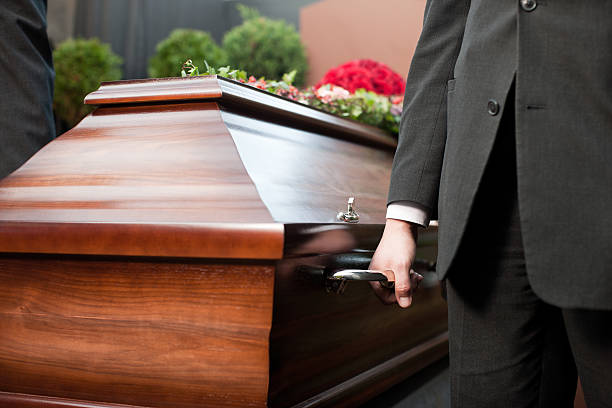 When someone dies, the body has to be transferred to the morticians. For example if the person was at hospital or a nursing home then body is driven to an morticians. But if the circumstances are not as clear then first the body has to be taken to the coroners before entering the morticians to discern how they died.
When someone dies, the body has to be transferred to the morticians. For example if the person was at hospital or a nursing home then body is driven to an morticians. But if the circumstances are not as clear then first the body has to be taken to the coroners before entering the morticians to discern how they died.Advertisement
2. They check the body for any disease
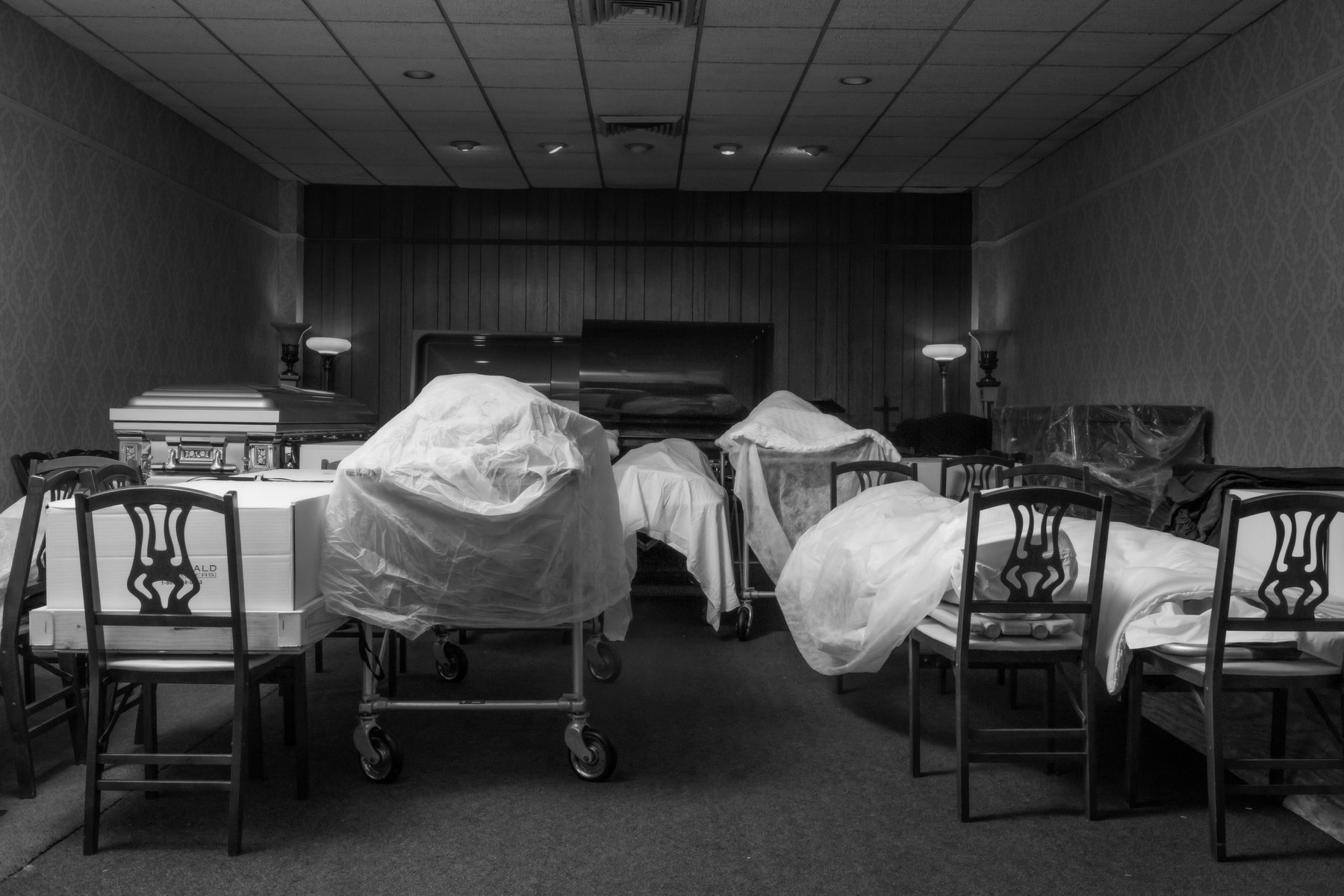 One of the first steps after retrieving the body is to check it for anything in particular. This could be anything from a pace maker to whether the body has a disease, or whether any fluids are coming from the body. This is because depending on the body, it will have to be treated in a different way.
One of the first steps after retrieving the body is to check it for anything in particular. This could be anything from a pace maker to whether the body has a disease, or whether any fluids are coming from the body. This is because depending on the body, it will have to be treated in a different way.Advertisement
3. They place the body onto a tray and wheel it into the fridge
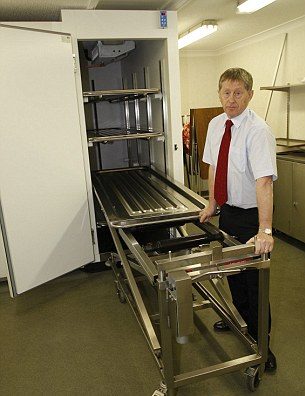 After assessing the body, it is then loaded onto a mortuary tray which can be metal or plastic, with wheels so that it can be easily transferred into the fridge. Then, the body is placed straight into the fridge as soon as possible so that it stops it from decomposing quickly.
After assessing the body, it is then loaded onto a mortuary tray which can be metal or plastic, with wheels so that it can be easily transferred into the fridge. Then, the body is placed straight into the fridge as soon as possible so that it stops it from decomposing quickly.Advertisement
4. The body is elevated to stop 'purging'
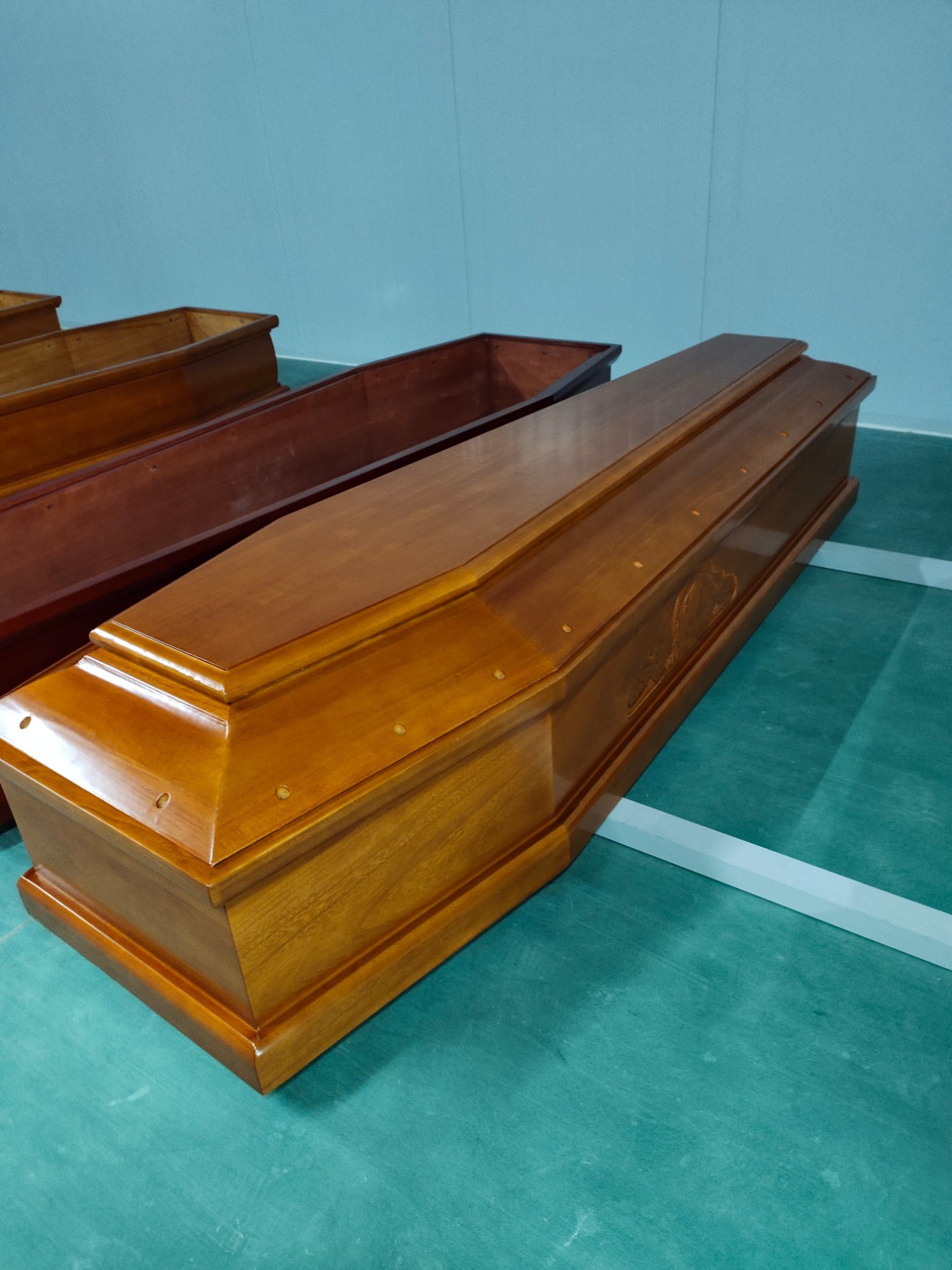 The head is placed higher than the rest of the body to avoid what is called in the mortician process as 'purging'. Purging refers to "leakage" from the mouth or the nose. The fluids that leak out can be for example, from blood or bile and so this is avoided where possible.
The head is placed higher than the rest of the body to avoid what is called in the mortician process as 'purging'. Purging refers to "leakage" from the mouth or the nose. The fluids that leak out can be for example, from blood or bile and so this is avoided where possible.Advertisement
5. They remove the clothes
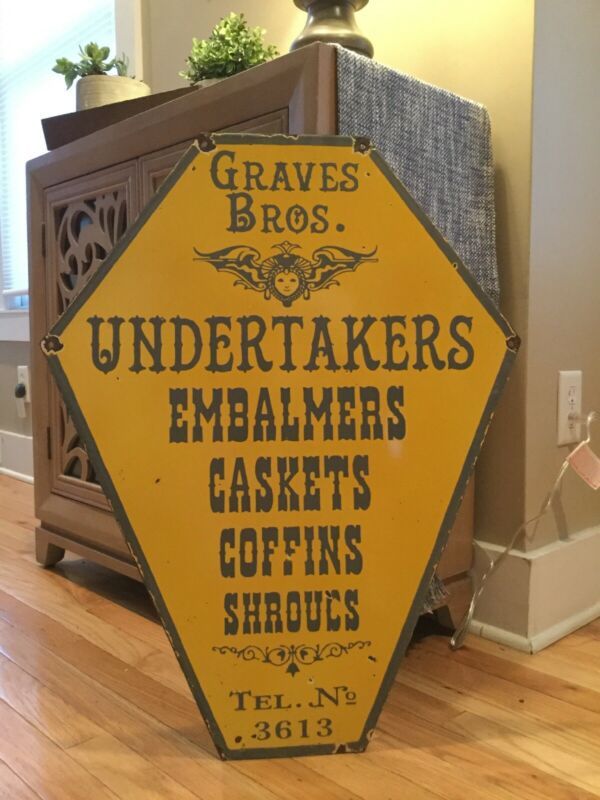 The clothes on the body of course have to be removed, which of course can take some work depending on how the person was dressed when they sadly died. Their clothes are carefully stored away and then they re-dress the body with a gown resembling those from hospital.
The clothes on the body of course have to be removed, which of course can take some work depending on how the person was dressed when they sadly died. Their clothes are carefully stored away and then they re-dress the body with a gown resembling those from hospital.Advertisement
6. Then the body is cleaned
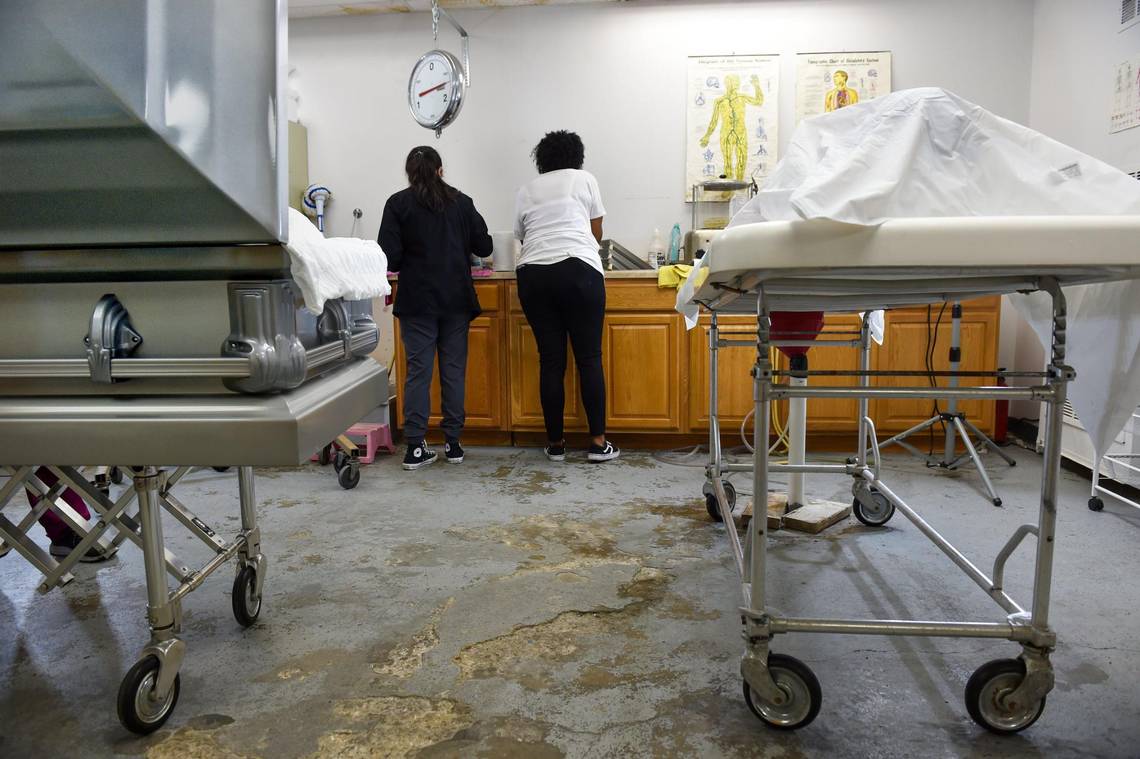 Of course another essential step is that the body is cleaned. This varies for each person depending on the state of the body. In most cases it does not require much of a cleaning process, but some bodies are more 'messy' and so the cleaning has to be more thorough.
Of course another essential step is that the body is cleaned. This varies for each person depending on the state of the body. In most cases it does not require much of a cleaning process, but some bodies are more 'messy' and so the cleaning has to be more thorough.Advertisement
7. Underwear is the first thing to be put on
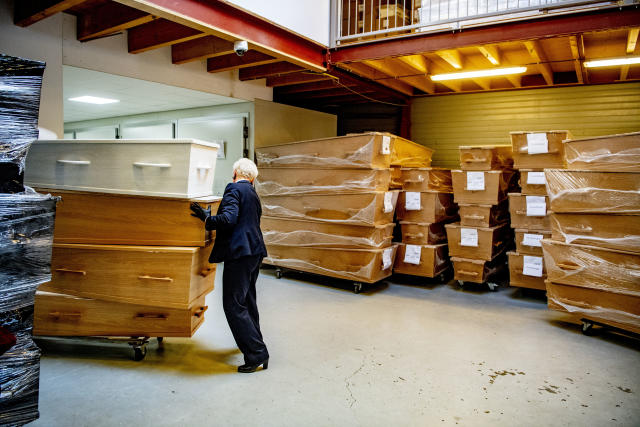 The first item of clothing to be put on is the underwear, to make sure the body is covered. Bodies are covered as soon as possible with underwear to protect the dignity and respect of the person who is deceased and also for the sake of the mortician too.
The first item of clothing to be put on is the underwear, to make sure the body is covered. Bodies are covered as soon as possible with underwear to protect the dignity and respect of the person who is deceased and also for the sake of the mortician too.Advertisement
8. They place eye caps in the eyes
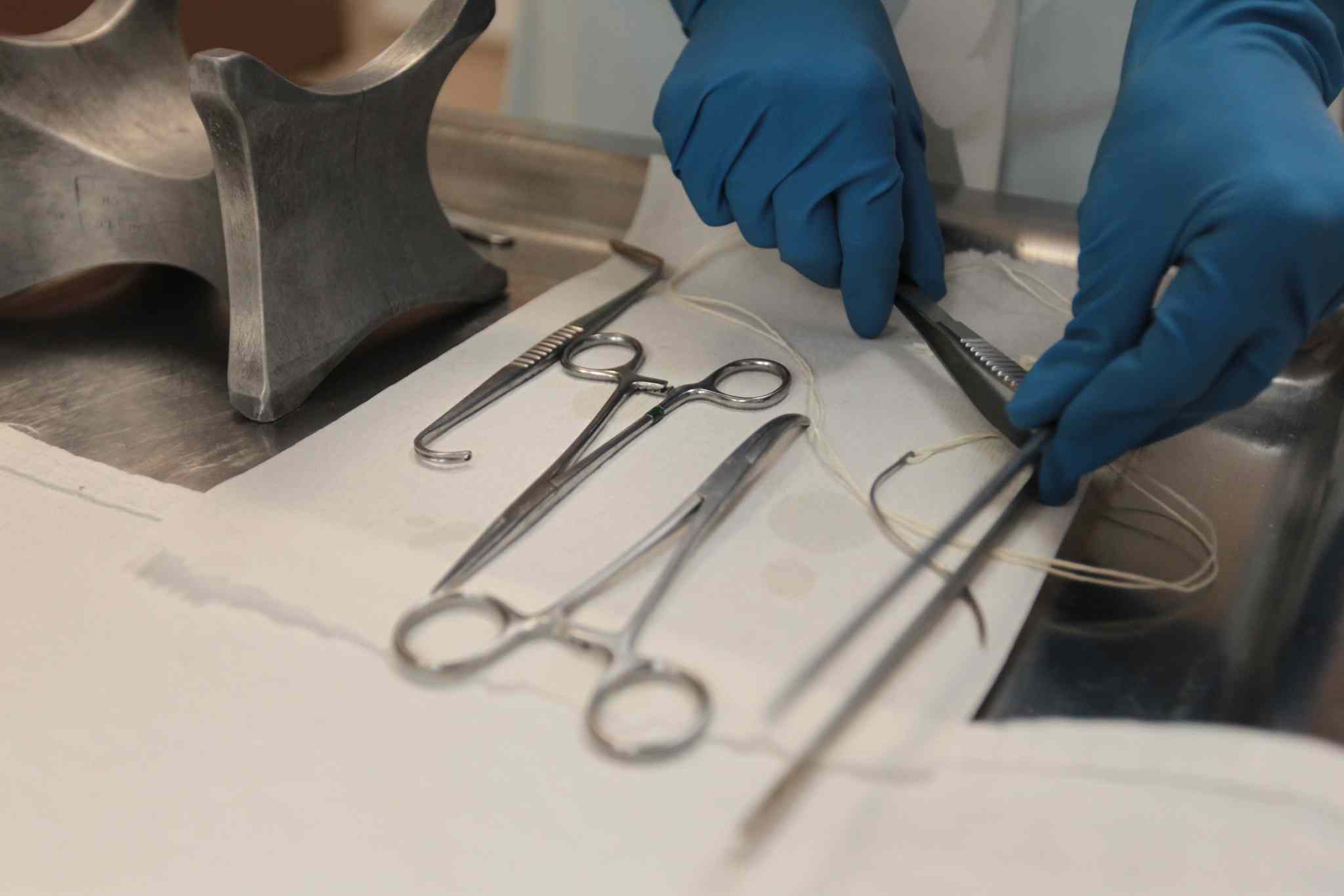 When someone dies, the eyes naturally sink in leaving noticeable dents in the face. And so "eye caps" are place inside the eye to prevent this. These are just small little flesh coloured disks which are inserted underneath the eye lids. They have tiny spikes on the outer side in order to hold the eyes closed.
When someone dies, the eyes naturally sink in leaving noticeable dents in the face. And so "eye caps" are place inside the eye to prevent this. These are just small little flesh coloured disks which are inserted underneath the eye lids. They have tiny spikes on the outer side in order to hold the eyes closed.Advertisement
9. Once in the coffin makeup is applied
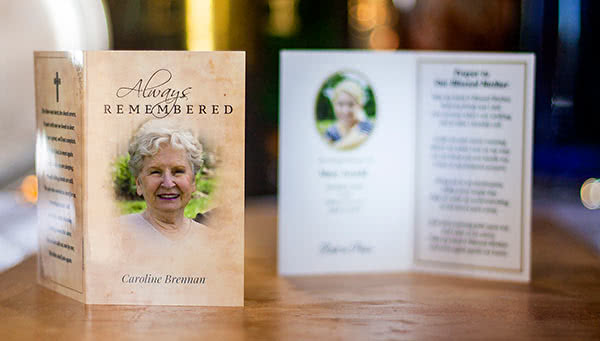 This also depends on the situation. But, a little bit of makeup is often applied so that the person looks more like themselves and to add some colour back into the face. This is done mainly for the sake of the grieving family who may want to visit the body.
This also depends on the situation. But, a little bit of makeup is often applied so that the person looks more like themselves and to add some colour back into the face. This is done mainly for the sake of the grieving family who may want to visit the body.Advertisement
10. The nose and mouth are plugged
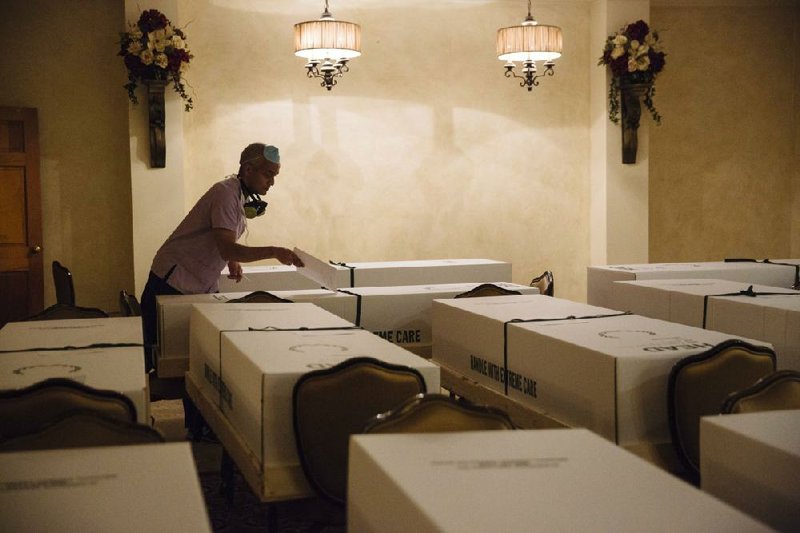 Because fluids naturally secrete from the nose and mouth, they are essentially plugged. This is done by taking cotton wadding and placing it down the throat as well as up the nose in order to prevent leakage so that the body can be preserved properly.
Because fluids naturally secrete from the nose and mouth, they are essentially plugged. This is done by taking cotton wadding and placing it down the throat as well as up the nose in order to prevent leakage so that the body can be preserved properly.Advertisement
11. The mouth is tied shut
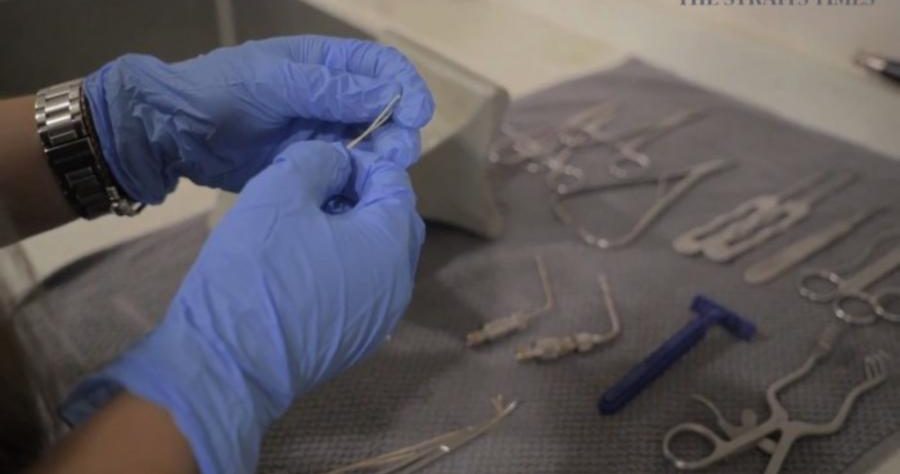 This point sounds a little bit strange and it is an idea that can sound shocking to those who are not inside the secrets of he mortician process. But it is delicately done by taking a needle and inserting i inside the throat first. Then the mouth is effectively sealed shut so that it cannot drop open.
This point sounds a little bit strange and it is an idea that can sound shocking to those who are not inside the secrets of he mortician process. But it is delicately done by taking a needle and inserting i inside the throat first. Then the mouth is effectively sealed shut so that it cannot drop open.Advertisement
12. The body is embalmed
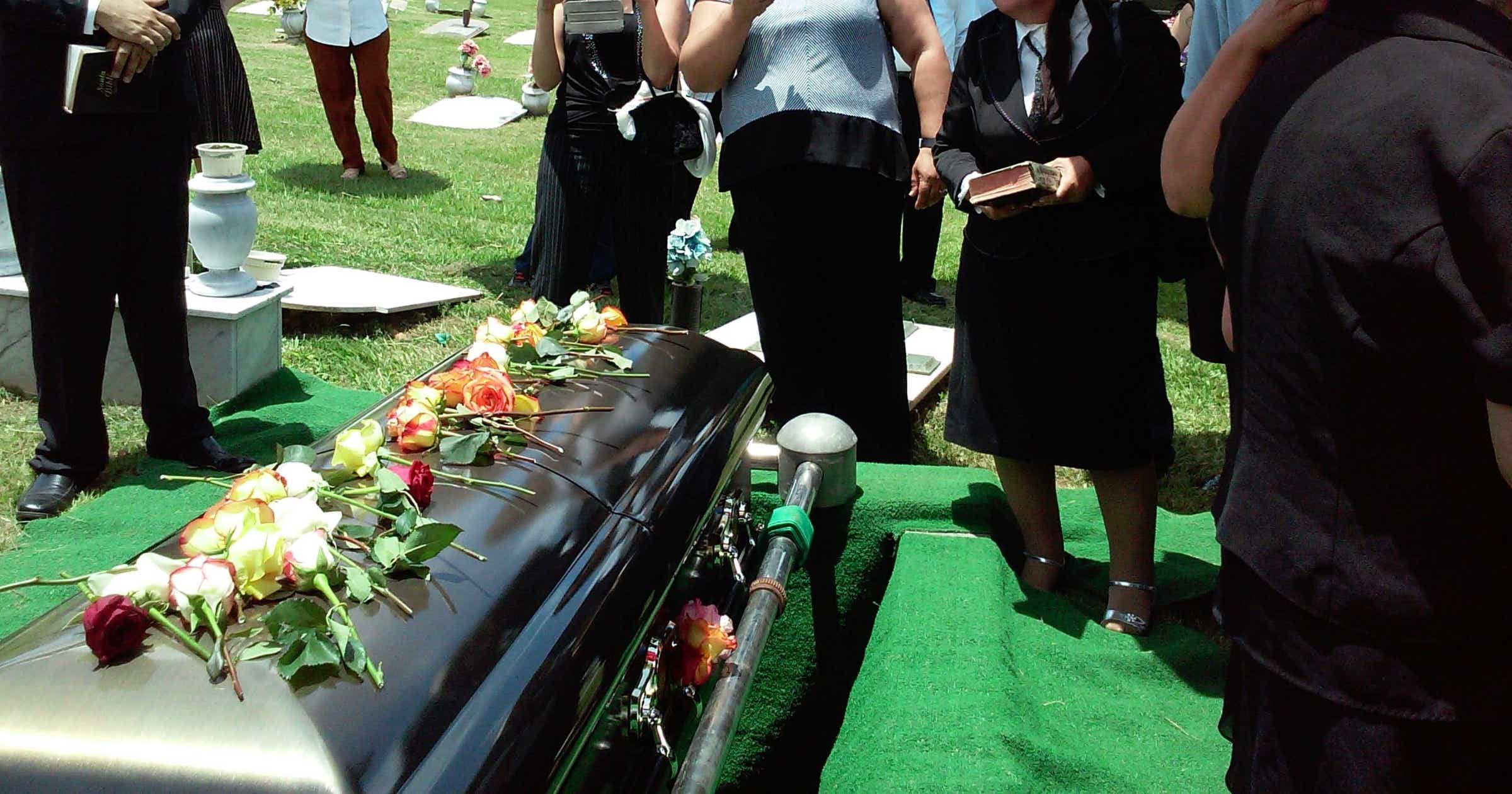 The process of embalming the body varies massively as there are different kinds of embalming which involve different processes. But essentially, preservation fluids are put inside the body as well as colourants. This preserves the body and also makes it look a lot more normal again.
The process of embalming the body varies massively as there are different kinds of embalming which involve different processes. But essentially, preservation fluids are put inside the body as well as colourants. This preserves the body and also makes it look a lot more normal again.Advertisement
13. With full embalming all organs are removed
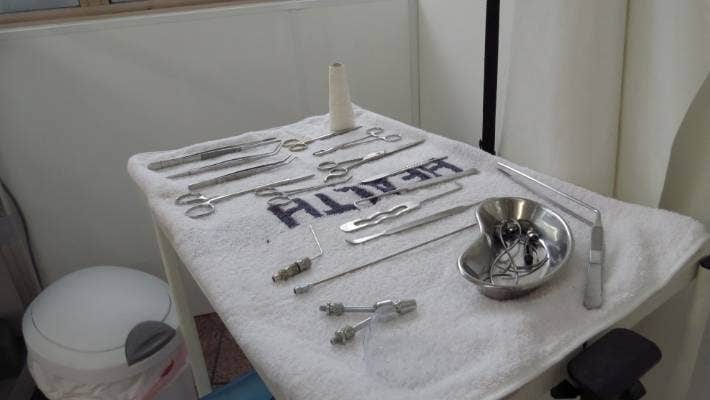 Full embalming is a much bigger and more complex process. Each and every one of the organs are removed (even including the brains), then they are scattered with a preserving powder and then everything is placed back inside the body in correct placement.
Full embalming is a much bigger and more complex process. Each and every one of the organs are removed (even including the brains), then they are scattered with a preserving powder and then everything is placed back inside the body in correct placement.Advertisement
14. Sometimes nappies are applied
 If the body looks in any danger of leaking, they the mortician will apply some kind of nappy to collect any fluid and prevent the body from leaking out. The mortician tries to prevent the body from leaking any fluid. And so if the body looks as though it may lose fluid in this way, a nappy is put on.
If the body looks in any danger of leaking, they the mortician will apply some kind of nappy to collect any fluid and prevent the body from leaking out. The mortician tries to prevent the body from leaking any fluid. And so if the body looks as though it may lose fluid in this way, a nappy is put on.Advertisement
15. Embalming can take hours to days
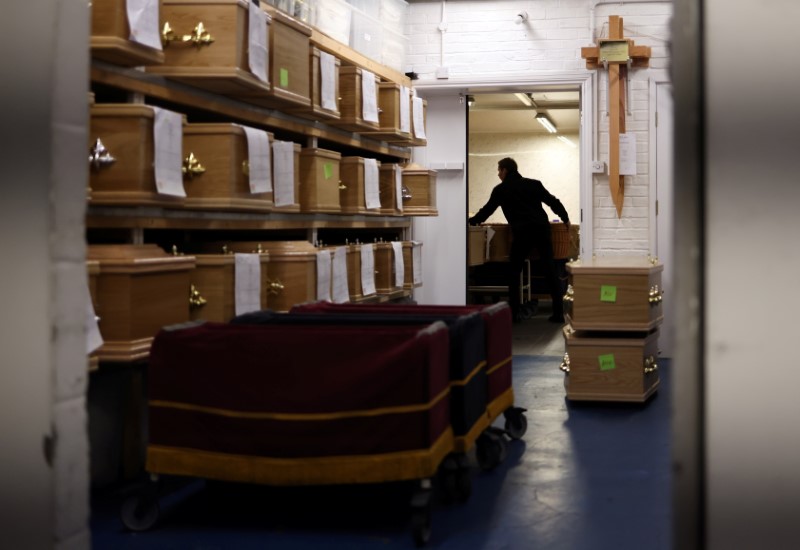 As we mention previously, there are many typed of embalming and the different kinds take different amounts of time. For example some embalming takes a few hours but some can take up to a couple of days for the process to be finished.
As we mention previously, there are many typed of embalming and the different kinds take different amounts of time. For example some embalming takes a few hours but some can take up to a couple of days for the process to be finished.Advertisement
16. Most of the job is dealing with the living
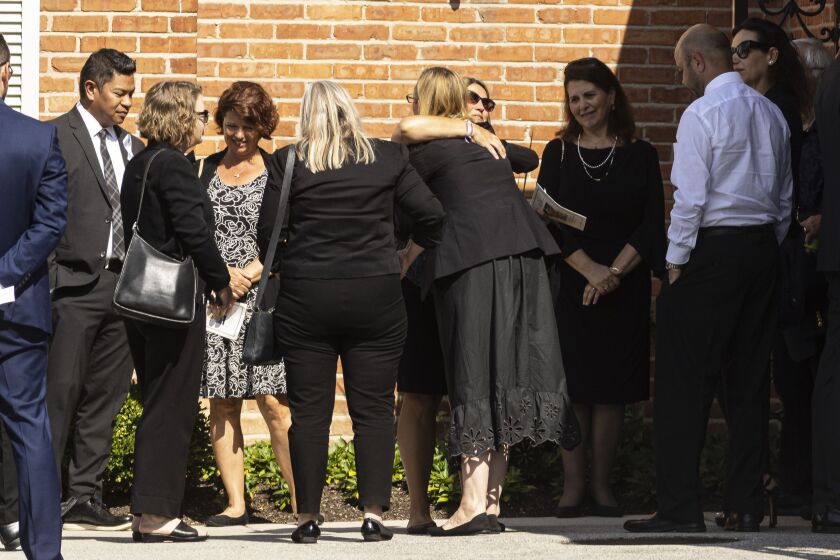 Again, there are a lot of misconceptions about being an mortician. One of these is that the mortician is constantly around death. But actually the majority of time according to morticians themselves, is amongst the living - the families of the deceased.
Again, there are a lot of misconceptions about being an mortician. One of these is that the mortician is constantly around death. But actually the majority of time according to morticians themselves, is amongst the living - the families of the deceased.Advertisement
17. Larger bodies are harder to deal with
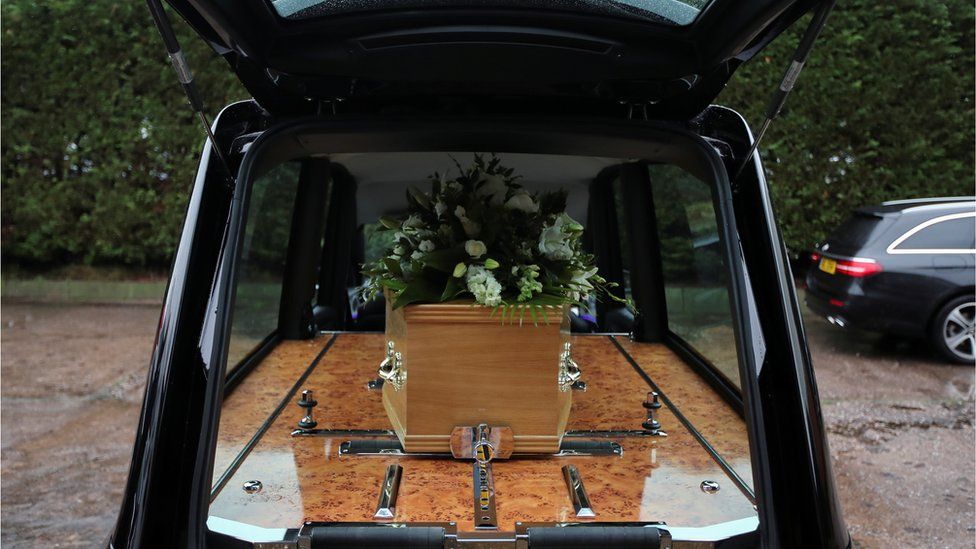 According to morticians, it is harder dealing with larger bodies - the larger it is the more difficult according to some. This is throughout the entire process from carrying the body from place to place, undressing and embalming. Because each step requires more work and takes more time.
According to morticians, it is harder dealing with larger bodies - the larger it is the more difficult according to some. This is throughout the entire process from carrying the body from place to place, undressing and embalming. Because each step requires more work and takes more time.Advertisement
18. Moriticians get used to the smell of decomposition
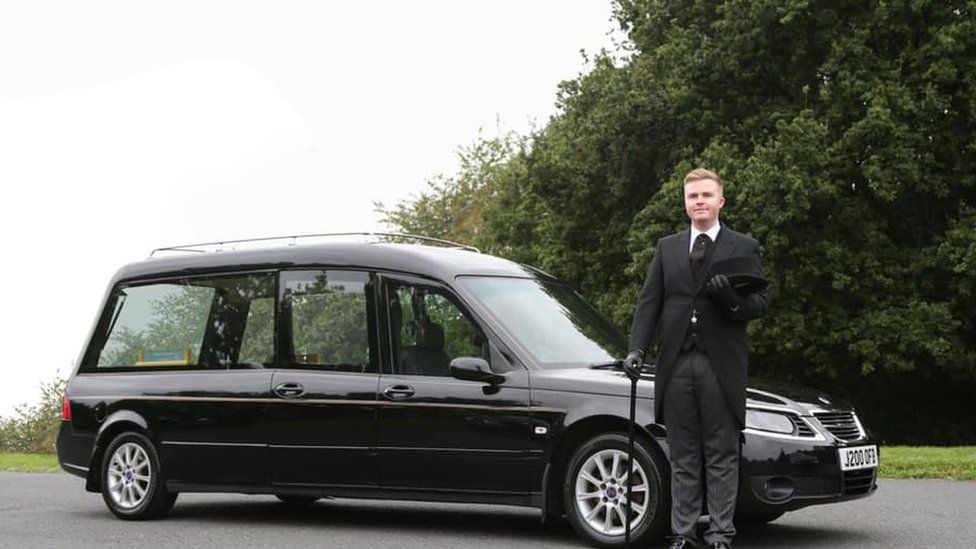 One mortician had revealed that the smell of decomposition is string, but the best thing to do is not to shy away from the smell or to mask it with another. He claimed that the best thing to do is take two big inhales, after that you adjust and get used to it.
One mortician had revealed that the smell of decomposition is string, but the best thing to do is not to shy away from the smell or to mask it with another. He claimed that the best thing to do is take two big inhales, after that you adjust and get used to it.Advertisement
19. The body turns green
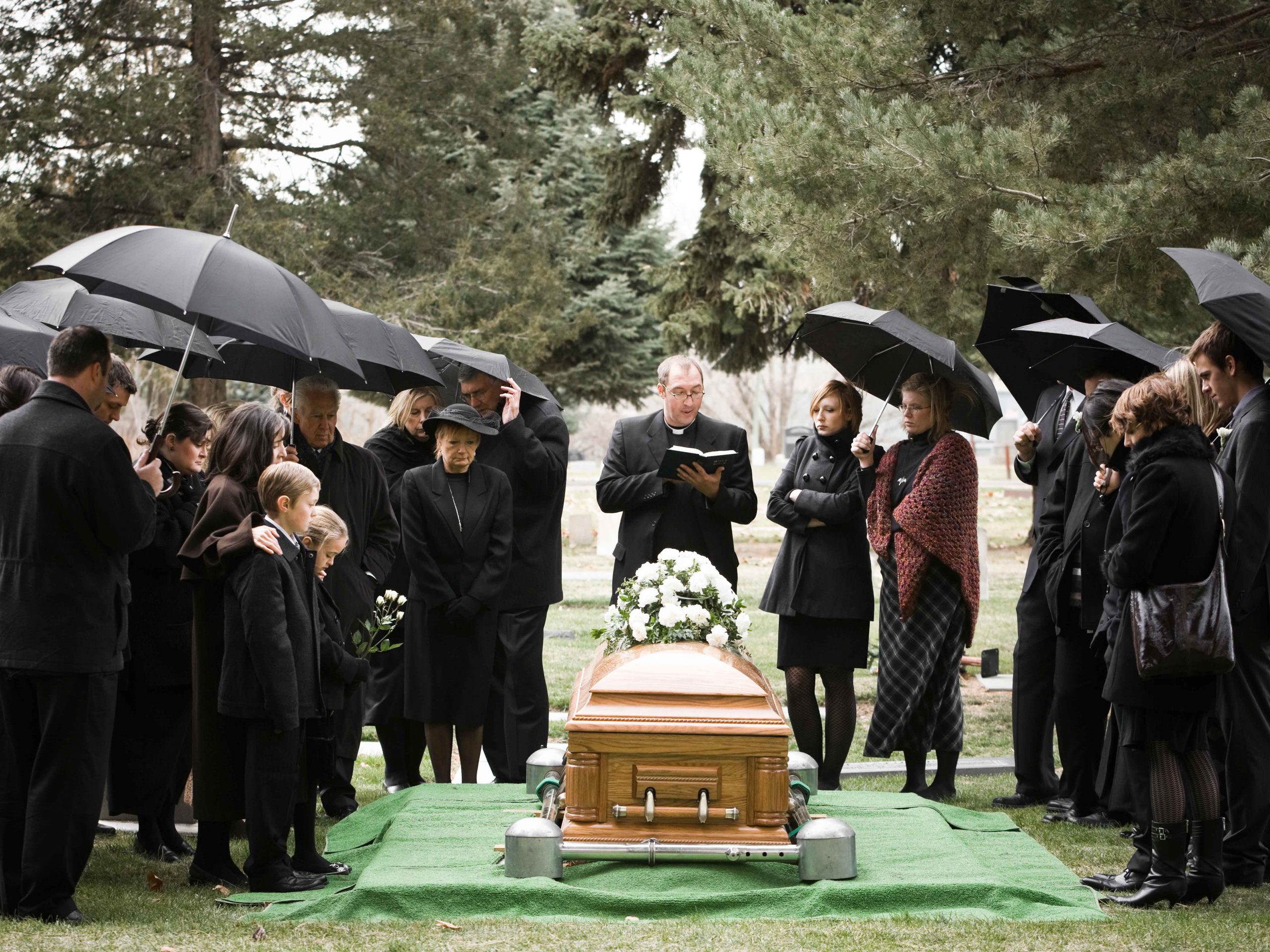 Morticians have revealed this dark secret about the realities of dealing with bodies. It is true that bodies do turn green eventually. The process of turning green always starts first around the stomach area, and then spreads to other parts of the body.
Morticians have revealed this dark secret about the realities of dealing with bodies. It is true that bodies do turn green eventually. The process of turning green always starts first around the stomach area, and then spreads to other parts of the body.Advertisement
20. You don't need qualifications
 It may sound strange because dealing with deceased bodies is a job very few have the capacity for. You would naturally think that it may require a lot of special qualifications. However that is no the case, you do not technically need qualifications to become an mortician.
It may sound strange because dealing with deceased bodies is a job very few have the capacity for. You would naturally think that it may require a lot of special qualifications. However that is no the case, you do not technically need qualifications to become an mortician.Advertisement
21. Bodies are room temperature
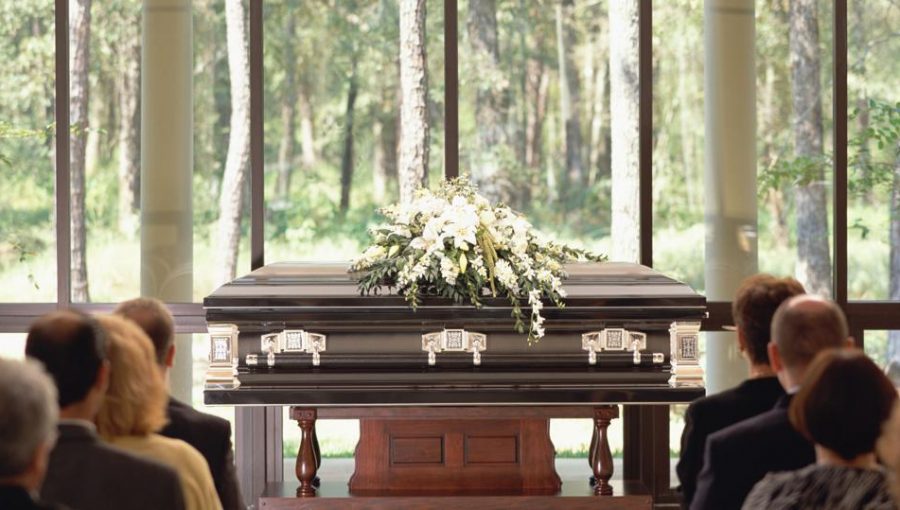 There is a common assumption that bodies are cold. This is because a living bod is warm and so in comparison a body is cold. But, it is actually just room temperature. However of course when it is kept in a fridge the body is cold to touch.
There is a common assumption that bodies are cold. This is because a living bod is warm and so in comparison a body is cold. But, it is actually just room temperature. However of course when it is kept in a fridge the body is cold to touch.Advertisement
23. Not all bodies have rigor-mortis
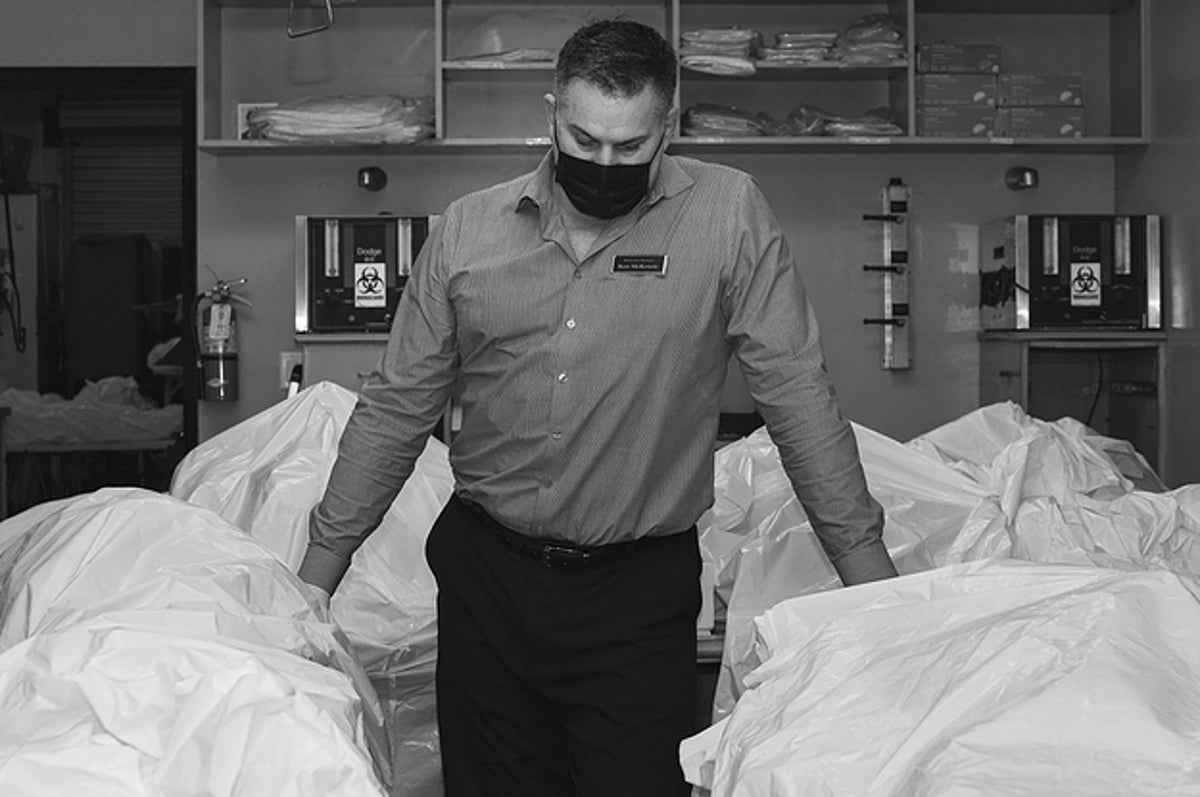 Rigor-mortis refers to a state when the limbs of a deceased body start to stiffen. It makes the body look and feel rigid and the body stays in the same position when moved. It does not happen to all bodies - even the majority - but with some it does occur.
Rigor-mortis refers to a state when the limbs of a deceased body start to stiffen. It makes the body look and feel rigid and the body stays in the same position when moved. It does not happen to all bodies - even the majority - but with some it does occur.Advertisement
24. Rigor mortis can be 'broken'
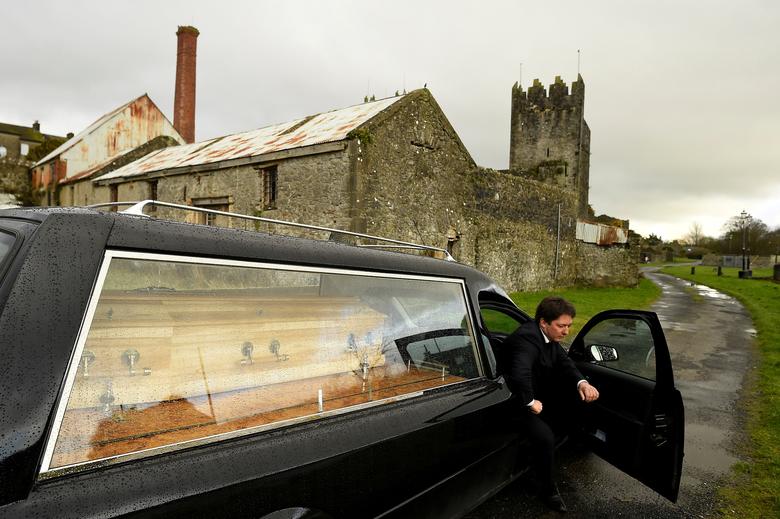 But, even when bodies do have rigor-mortis it is easily stopped it does not mean it is permament. This happens by the mortician bending and moving the joints about for a while. The body then comes out its state rigor-mortis so that it then becomes more moveable again.
But, even when bodies do have rigor-mortis it is easily stopped it does not mean it is permament. This happens by the mortician bending and moving the joints about for a while. The body then comes out its state rigor-mortis so that it then becomes more moveable again.Advertisement
25. Being a mortician can be very messy
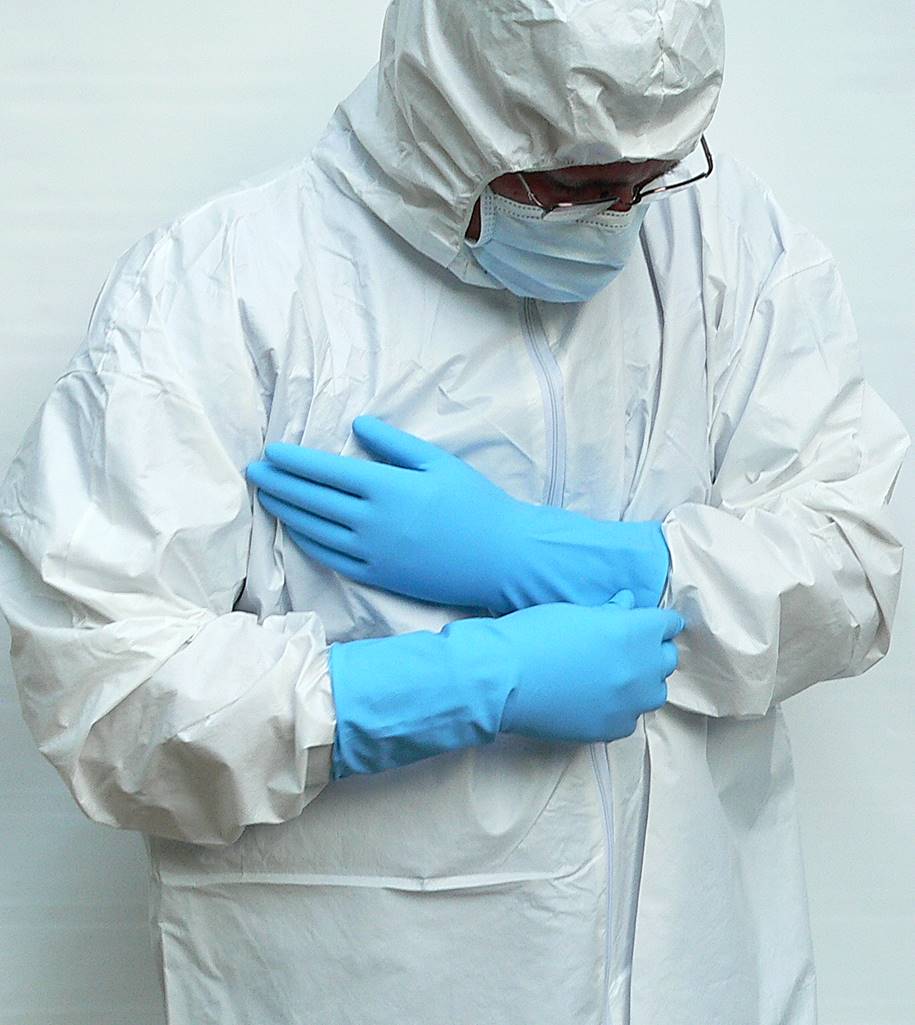 This again is very dependent. Because a lot of the time, the body will not be messy and the job is not messy at all.Sometimes in certain cases there is a lot of mess, which is sometimes inevitable. But, the morticians are geared up in protective clothing.
This again is very dependent. Because a lot of the time, the body will not be messy and the job is not messy at all.Sometimes in certain cases there is a lot of mess, which is sometimes inevitable. But, the morticians are geared up in protective clothing.Advertisement
26. There is a lot of paperwork
 Of course when having such a sensitive job there comes a lot of paperwork. Their records have to show the name of the deceased and their date of death as well as their age at the time of death. Also the place the body was transferred from and the date this happened. Also,, who was responsible for the transfer along with any valuables attached to the person.
Of course when having such a sensitive job there comes a lot of paperwork. Their records have to show the name of the deceased and their date of death as well as their age at the time of death. Also the place the body was transferred from and the date this happened. Also,, who was responsible for the transfer along with any valuables attached to the person.Advertisement
27. bodies are kept at 3 and 5 degrees celsius
 There is a very precise temperature that you can keep bodies at. This is between 3 and 5 degrees celsius. So the fridges are set between this temperature. Any lower and the body would start to freeze. Any higher and the body would start to decay and decompose more rapidly.
There is a very precise temperature that you can keep bodies at. This is between 3 and 5 degrees celsius. So the fridges are set between this temperature. Any lower and the body would start to freeze. Any higher and the body would start to decay and decompose more rapidly.Advertisement
28. They form funghi if kept in the fridge too long
 Morticians have revealed this secret.If you leave a body in a fridge too long, a certain fungi will grow on it. The fungus is either orange or white and not found anywhere else other than a body when it is in those conditions. Out of the fridge, the fungus does not appear.
Morticians have revealed this secret.If you leave a body in a fridge too long, a certain fungi will grow on it. The fungus is either orange or white and not found anywhere else other than a body when it is in those conditions. Out of the fridge, the fungus does not appear.Advertisement
29. It is not a 'morbid' job
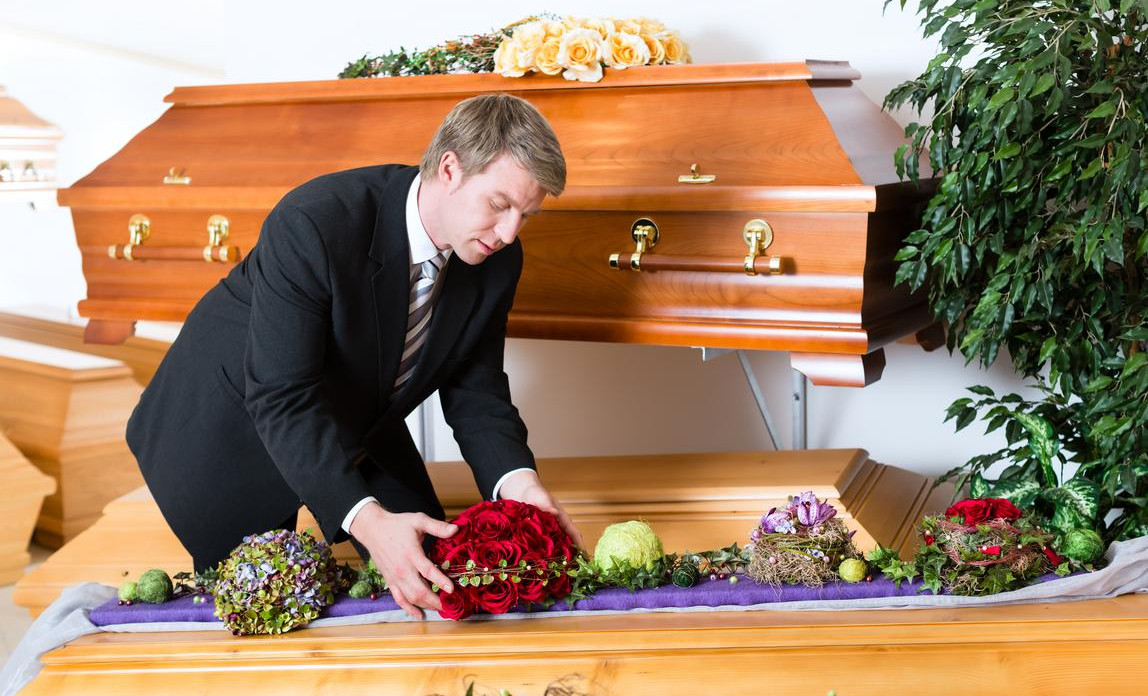 It has a very morbid reputation, and it is certainly understandable why people assume that it must be a very depressing job to have. But, according to morticians they clarify that it is not in fact a morbid job. Some even go as far to say it is just the same as any normal job.
It has a very morbid reputation, and it is certainly understandable why people assume that it must be a very depressing job to have. But, according to morticians they clarify that it is not in fact a morbid job. Some even go as far to say it is just the same as any normal job.Advertisement
30. Trying to avoid the smell makes it worse
 Morticians have claimed that the more you try and avoid the smell - the worse it us.These tricks such as playing some toothpaste under your nostrils or trying not to breathe much actually only make the smell last longer than if you just don't try at all.
Morticians have claimed that the more you try and avoid the smell - the worse it us.These tricks such as playing some toothpaste under your nostrils or trying not to breathe much actually only make the smell last longer than if you just don't try at all.Advertisement
31. They Use Normal Minivans
 There is a misconception that bodies are collected and transported using a hearse. But these are rarely used, these are mainly for ceremonial purposes alone. So actually it is usually just ordinary mini van so that t is not obvious to the rest of the world what is happening.
There is a misconception that bodies are collected and transported using a hearse. But these are rarely used, these are mainly for ceremonial purposes alone. So actually it is usually just ordinary mini van so that t is not obvious to the rest of the world what is happening.Advertisement
32. Setting The Expression Is One Of The Most Important Things
 To a grieving family, some comfort comes by looking at the peaceful expression on the face of their deceased loved one. But this takes a lot of work. The features have to be set in place it does not happen naturally which most people tend to assume...
To a grieving family, some comfort comes by looking at the peaceful expression on the face of their deceased loved one. But this takes a lot of work. The features have to be set in place it does not happen naturally which most people tend to assume...Advertisement
33. Sometimes Superglue Is Used
 This is a horrifying thought, to think of superglue being used on a body. But according to Smoke Gets In Your Eyes, mortician Caitlin Doughty reveals: “If the usual methods of setting the features aren’t sufficient to keep the eyes closed or the mouth shut, superglue is a secret weapon.”
This is a horrifying thought, to think of superglue being used on a body. But according to Smoke Gets In Your Eyes, mortician Caitlin Doughty reveals: “If the usual methods of setting the features aren’t sufficient to keep the eyes closed or the mouth shut, superglue is a secret weapon.”Advertisement
34. Or A Hair Tie...
 Mortician Amy Cunningham revealed in an interview another method of achieving the expected look: “If you need to keep a deceased person’s hands folded neatly at their abdomen, but their arms keep falling down into the sides of the casket, you can gently bind their thumbs with a ponytail tie.”
Mortician Amy Cunningham revealed in an interview another method of achieving the expected look: “If you need to keep a deceased person’s hands folded neatly at their abdomen, but their arms keep falling down into the sides of the casket, you can gently bind their thumbs with a ponytail tie.”Advertisement
35. Protective Caskets Aren't A Great Idea
 Protective caskets are sold under the guise of protecting the body from any outside factors, for example any of the outside penetrating in such as the earth or insects. But actually, it makes the inside a breeding ground for bacteria and encourages the inside to rot away.
Protective caskets are sold under the guise of protecting the body from any outside factors, for example any of the outside penetrating in such as the earth or insects. But actually, it makes the inside a breeding ground for bacteria and encourages the inside to rot away.Advertisement
36. Sometimes Caskets Explode
 Sometimes caskets explode. This is because of the buildup of methane gas can cause what people in the industry call “exploding casket syndrome”. The gas builds up util the pressure reaches a point where the gas will literally make the casket explode open. And so they have to be unsealed regularly.
Sometimes caskets explode. This is because of the buildup of methane gas can cause what people in the industry call “exploding casket syndrome”. The gas builds up util the pressure reaches a point where the gas will literally make the casket explode open. And so they have to be unsealed regularly.Advertisement
37. Pace Makers Can Also Explode
 Pace makers can cause damage to the cremation machine because of the batteries inside of them. This is why it is so important for the undertaker to make sure the remove them in the first instance so that they are not still present during the cremation.
Pace makers can cause damage to the cremation machine because of the batteries inside of them. This is why it is so important for the undertaker to make sure the remove them in the first instance so that they are not still present during the cremation.Advertisement
38. They Use Rose Coloured Lighting
 Morticians use rose coloured lighting to give the appearance of pinky rosy flesh, rather than grey. Which of course is partially achieved by the staining of the flesh but sometime it is not enough and so the rosy coloured lighting helps to create this illusions too.
Morticians use rose coloured lighting to give the appearance of pinky rosy flesh, rather than grey. Which of course is partially achieved by the staining of the flesh but sometime it is not enough and so the rosy coloured lighting helps to create this illusions too.Advertisement
39. One Embalming Can Generate 120 Gallons Of Waste
 It sounds like a shocking statistic but around 120 gallons of waste are produced from an embalming. These include things such as blood, fecal matter, and the contents of the internal organs, as well as any chemicals that have been added which have been released from the body.
It sounds like a shocking statistic but around 120 gallons of waste are produced from an embalming. These include things such as blood, fecal matter, and the contents of the internal organs, as well as any chemicals that have been added which have been released from the body.Advertisement
40. Everything Goes Down The Drain
 What is even perhaps more shocking that realising just how much waste is produced from one embalming, is realising that it goes straight down the drain.And no, not a hazardous waste drain just the usual drain which we use daily. It is an uncomfortable thought.
What is even perhaps more shocking that realising just how much waste is produced from one embalming, is realising that it goes straight down the drain.And no, not a hazardous waste drain just the usual drain which we use daily. It is an uncomfortable thought.Advertisement
41. Embalmers Are Exposed To Dangerous Chemicals
 Morticians and those ding the embalming are actually at health risks because of the dangerous and toxic chemicals that they work with on a daily basis. These chemicals have been linked to health problems so they have to be very careful when handling them.
Morticians and those ding the embalming are actually at health risks because of the dangerous and toxic chemicals that they work with on a daily basis. These chemicals have been linked to health problems so they have to be very careful when handling them.Advertisement
42. You Can't Be Buried Under A Tree
 It is a dream of many to be buried under a tree. But it is not actually possible. A body must be buried at least four feet from a tree to protect its root system and the health of the tree. So the idea of being buried under a tree is not actually viable, but quite close.
It is a dream of many to be buried under a tree. But it is not actually possible. A body must be buried at least four feet from a tree to protect its root system and the health of the tree. So the idea of being buried under a tree is not actually viable, but quite close.Advertisement
43. Some Don't Agree With Preserving The Body
 Some people and some morticians actually do not like the idea of preserving the body or embalming. One mortician thinks hat a body should look dead, rather than being falsely presented. One reason for this is to help the family come to terms with it and deal with it.
Some people and some morticians actually do not like the idea of preserving the body or embalming. One mortician thinks hat a body should look dead, rather than being falsely presented. One reason for this is to help the family come to terms with it and deal with it.Advertisement
44. There Is A Tradition To Bury Children At Cost
 The death of a baby or child is so tragic that it is a general rule that funeral homes will do the service at cost due to the heartbreaking nature of the case. There are also charities which work with funeral homes to provide things for free for the family dealing with their loss.
The death of a baby or child is so tragic that it is a general rule that funeral homes will do the service at cost due to the heartbreaking nature of the case. There are also charities which work with funeral homes to provide things for free for the family dealing with their loss.Advertisement
45. Breast Implants Usually Melt
 If somebody is cremated with breast implants, they will melt inside of the cremation machine. Breast implants are one of those things which are often not removed, and so of course they melt down inside the cremation machine which does not cause too much damage.
If somebody is cremated with breast implants, they will melt inside of the cremation machine. Breast implants are one of those things which are often not removed, and so of course they melt down inside the cremation machine which does not cause too much damage.Advertisement
46. And Other's Will Be Melted Down
 Things like hip replacements etc can be requested by the family to be kept. But, this rarely happens and so instead they are melted down with other plastics and used to make things such as road signs. They are removed as they cannot be burned with the ashes due to it being plastic.
Things like hip replacements etc can be requested by the family to be kept. But, this rarely happens and so instead they are melted down with other plastics and used to make things such as road signs. They are removed as they cannot be burned with the ashes due to it being plastic.Advertisement
47. Some Morticians Hire Dogs
 In some funeral homes they employ dogs. Therapy dogs are a great comforter and a great way for those who are grieving to cope with loss. They are the best companions and there are chemicals released when you spend close contact with a dog or animal that relieve stress.
In some funeral homes they employ dogs. Therapy dogs are a great comforter and a great way for those who are grieving to cope with loss. They are the best companions and there are chemicals released when you spend close contact with a dog or animal that relieve stress.Advertisement
48. They Cover The Legs Because Shoes Are Difficult To Put On
 You may have noticed that morticians cover the legs of the deceased. This is because the feet often do not have shoes on. They are difficult to place on because the feet have stiffened. Although this is not the only reason, there are other things such as for religious reasons.
You may have noticed that morticians cover the legs of the deceased. This is because the feet often do not have shoes on. They are difficult to place on because the feet have stiffened. Although this is not the only reason, there are other things such as for religious reasons.Advertisement
49. There Are More Environmentally Friendly Ways
 Caskets and funerals in general as well as embalming are not good for the planet.But there are ways to make it more friendlier to the earth if that is your intention. For example if you use a rental casket the body is then buried in something similar to a cardboard box which decomposes better.
Caskets and funerals in general as well as embalming are not good for the planet.But there are ways to make it more friendlier to the earth if that is your intention. For example if you use a rental casket the body is then buried in something similar to a cardboard box which decomposes better.Advertisement
50. Don't Get Ashes In A Temporary Container
 When you have the ashes returned to you, make sure you ask the crematory before the return to transfer the ashes in a plain metal or plastic container. Otherwise they give you the ashes in a container which has temporary stamped on it as a way to get you to buy a more expensive urn
When you have the ashes returned to you, make sure you ask the crematory before the return to transfer the ashes in a plain metal or plastic container. Otherwise they give you the ashes in a container which has temporary stamped on it as a way to get you to buy a more expensive urnAdvertisement
